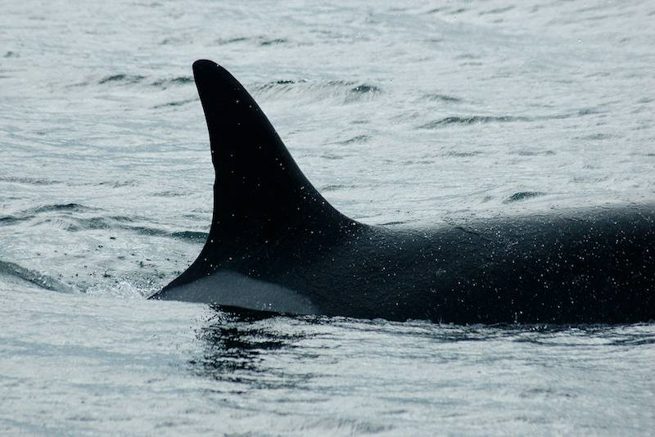According to reports from the Center for Whale Research, the world’s oldest known killer whale is presumed dead.
The female orca whale – named J2, but affectionately referred to as “Granny” – has not been seen since October 2016, and was believed to be over 100 years old.
J2 was part of the endangered southern resident killer whale (SRKW) population, which live in the waters off of British Columbia and Washington state. While 2015 ended with a “baby boom” of SRKW births, bringing the population up to 85 whales, 2016 brought the population back down to 79 whales after a string of reproductive issues in female SRKWs.
Whale watchers categorize groups of whales by letter into “pods” for categorization purposes. J2 was named after the “J” pod, of which she was considered a leader. Southern resident killer whales were split up into “J” “K” and “L” pods by researchers.
The whales’ whereabouts have been followed by researchers since the 1970s, and was easily identified by a marking on her dorsal fin. J2 has mystified whale watchers since – as orca whales typically only live between 60 and 80 years – and was even the star of a recent BBC documentary.
In a memorial blog post for the Center for Whale Research, a non-profit organization devoted to the benign study and conservation of southern resident killer whales, which had been following J2, Erin Heydenreich wrote that as more and more female whales in these pods die, the lack of proper structure is dangerous for the entire population.
“We have speculated that the absence of older females may contribute to the loss of cohesion within the pods. Anyone who is watching the whales has likely observed the fragmentation of all three pods over the years, where groups that once traveled consistently and predictably together no longer do so,” Heydenreich wrote.
“We have attributed this change in behavior to lack of food availability – the whales have to spread out to look for salmon that are scarce – but perhaps a loss of older female leadership is also having an impact”.
Just weeks before J2’s passing, another whale in her pod known as J34 had died. J2 was especially important within the “J” pod, as she used her advanced age to teach younger killer whales where and when to find food.
The diet for southern resident killer whales is Chinook salmon, and the decline in their population means sustenance has been scarce, and the effects have been damaging. As orcas starve, their bodies metabolize their own blubber, which releases toxins into their bodies.
J2 has no living offspring. Her child, a mature male orca whale named J1, or “Ruffles,” accompanied her up to 2010, when he died at the approximate age of 60 years old.



